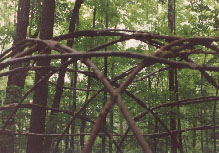
The Amazing Geometry of the Wigwam Frame |
of Contemporary Wigwams
|

The Amazing Geometry of the Wigwam Frame |
of Contemporary Wigwams
|

The completed sapling frame of my wigwam in the northeastern connecticut woods. The poles are made of sassafrass, the hoops are made of sweet birch. |
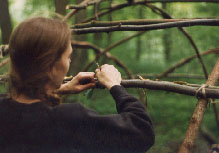
Me, lashing the hoops onto the wigwam poles, which gives the structure added support. |
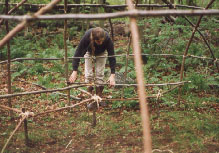
Again me, building the frame for the sleeping platforms inside the wigwam. |
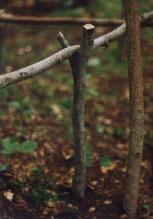
One of the short 'Y' poles that supports the sleeping platform frame inside the wigwam. |
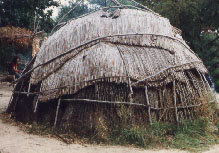
A completed family wigwam at Plimoth Plantation showing bark sheets on the bottom, and cattail mats covering the top. |
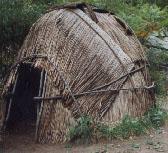
A smaller woman's wigwam (specially made for her moon time) at Plimoth Plantation covered with cattail mats. |
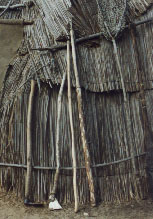
A close-up of the family wigwam at Plimoth Plantation showing the sewn cattail mats on the exterior of the house. Garden hoes and fishing gear lean against the side. |
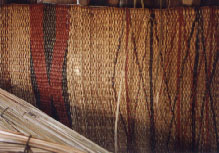
Interior finely woven bullrush mats hanging from the interior walls of the family wigwam at Plimoth Plantation. |
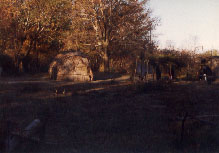
Wigwam from a distance at sunset at Plimoth Plantation. |

A bark covered wigwam built by James Dina in central Connecticut. Note the rocks which help weight down the bark sheets, and spare bark shingles piled to the right of the wigwam. |
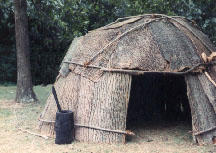
A bark covered wigwam built by Jeff Kaline brought to the Mohegan Fort Shantok Powwow. |
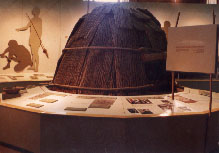
A bark covered wigwam built by Jeff Kaline for the Connecticut Museum of Natural History. |
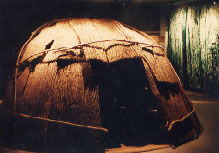
Another bark covered wigwam built by Jeff Kaline, in the basement of the Pequot Casino. |

© 1994-2000 Tara Prindle.